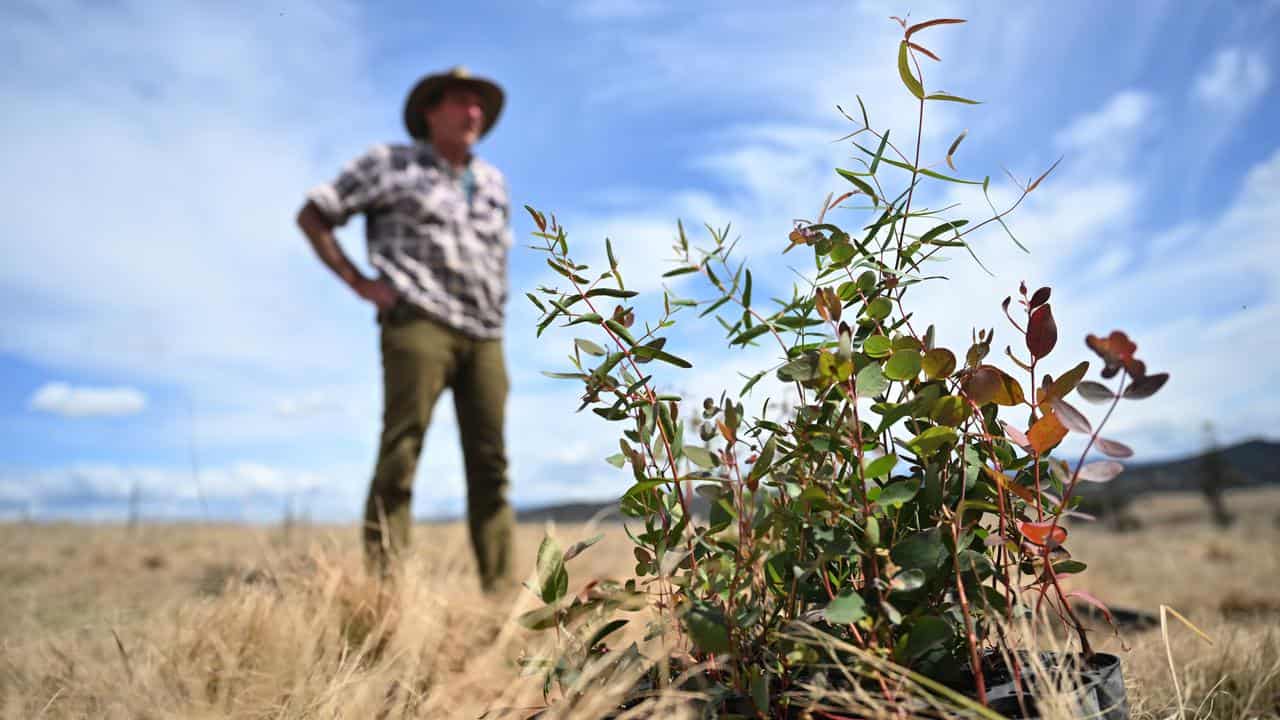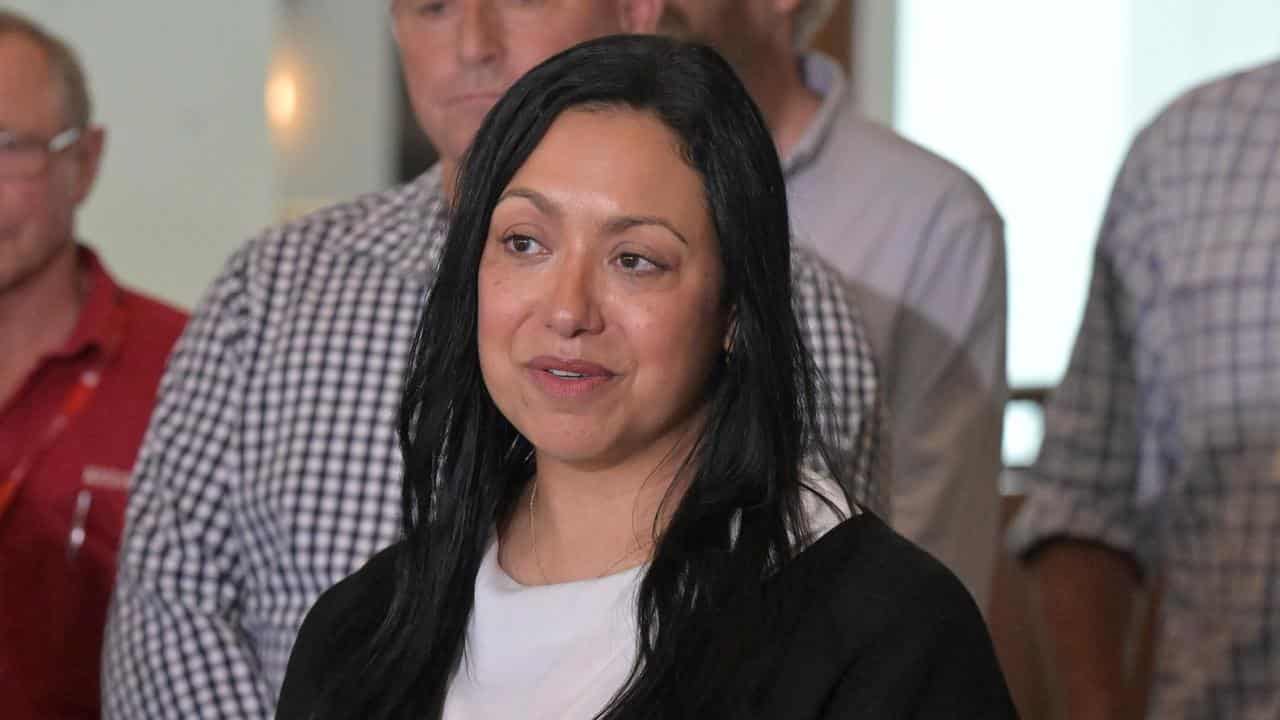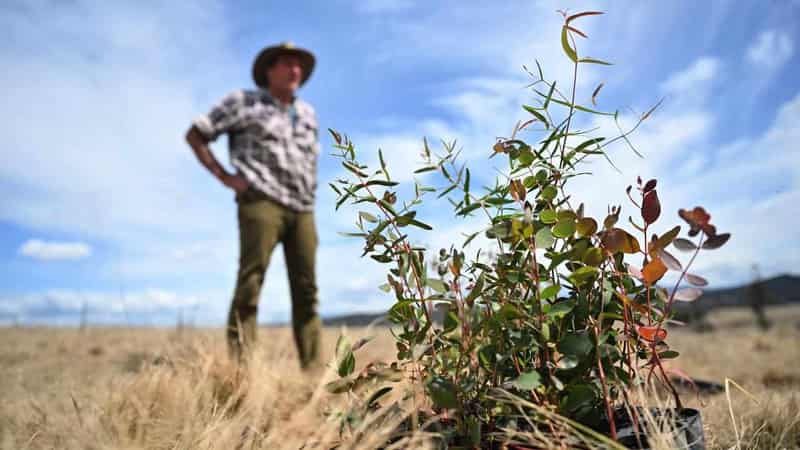
Investors are holding back on climate and nature repair investment in Australia as uncertainty continues for the carbon market.
Carbon credits have been at the heart of Australia's climate policy under coalition and Labor governments, along with a safeguard mechanism that sets a speed limit for emissions by heavy industry.
"I can't stress enough that investors and capital can go elsewhere if the system doesn't work well," John Connor, chief executive of the member-led Carbon Market Institute, has told AAP.
He says a "new phase" is underway for carbon markets that is more focused on having the biggest climate impact in avoiding emissions and moving on from so-called offsets and carbon neutrality.
But these projects take three to five years to generate and there are also significant changes around native title engagement, Mr Connor warns.
"We are worried the system is going to be under-resourced, which is why we're anxious about the upcoming budget as well," he says.

The Clean Energy Regulator, which administers Australia's carbon credits, says it expects to issue least 20 million credits in 2024, which would be a record.
Each represents one tonne of emissions stored or avoided and is issued to a farmer or business reducing carbon under approved methods.
Some 65.5 million tonnes of emissions were reduced in 2023 by schemes administered by the regulator, according to the latest official data.
About 17.2 million credits were issued in 2023, down three per cent on the previous year, amid fierce debate about market integrity that culminated in an official review.
Led by former chief scientist Ian Chubb, it found arrangements were "essentially sound" but recommended changes to restore confidence in the scheme's integrity and effectiveness.
Sparking the furore, leading critic Professor Andrew Macintosh and a team of researchers had warned the scheme was a "fraud on taxpayers and the environment".
Their analysis slammed up to 80 per cent of credits issued under three of the $4.5 billion federal Emission Reduction Fund's most-used methods.
An immediate change after the Chubb review was the scrapping of a contentious method that generates carbon credits for protecting native forest from land clearing.
The Human-Induced Regeneration method expired on October 1, 2023, which means new projects cannot be registered but older projects remain on the books.
HIR has been the only nature-based method that generates a significant volume of Australian carbon credit units or ACCUs, according to S&P Global.

Projects already registered will continue to be issued ACCUs till their crediting period - usually 25 years - ends and will face new checks and balances to ensure greater integrity.
Recent research using historical data by academics from three universities, including Prof Macintosh, reiterated that forests were not regenerating as anticipated under the scheme.
Farmers for Climate Action says the latest scientific paper is further evidence the Chubb Review failed to resolve all the questions and concerns about carbon markets.
"There is more work to do to ensure not just a fair and free market but confidence carbon credits represent genuine abatement," the body's CEO Natalie Collard says.
"Any market paying farmers for sequestering carbon must be robust and scientifically based to prevent the market collapsing and leaving farmers vulnerable," she says.
Market analysis firm RepuTex shows the carbon market reacted to the latest research paper, with HIR ACCUs down from $35.75 to a daily low of $32.00/tonne in heavy trade, before closing that day at $34.00.
In contrast, generic ACCUs fell $1.25 to a daily low of $32.50, before climbing back to $33.75 by the close - still far from the April 2023 record above $39.
Farmers are concerned they'll face higher costs as investors turn to other methods. A key feature of the old method was the low cost of applying it to vast pastoral landscapes.
Separate claims have also been made about the integrity of soil carbon methodology, which proponents say risks undermining the method of keeping life below the soil much more vibrant than it ever was.
Using landfill gas from waste to generate electricity or produce biomethane is another area under scrutiny and official review for being rejigged with less generous baselines.
However a new way is being developed for farmers to generate carbon credits called the Integrated Farm and Land Management method.

RepuTex said the federal government softened its position on the new method after pushback from project developers, indicating it is open to allowing new regeneration projects, subject to evidence on the link between grazing management and regeneration.
The proposed method now combines several existing soil and vegetation sequestration procedures - and the expired HIR category - into a single method but official say it won't be ready for sign-off until the second half of 2024.
It will be applicable across many landscapes, including higher rainfall areas, rather than merely the large pastoral areas and arid zones of Australia, which may drive up the cost.
"Everyone is aware that extra scrutiny must be applied," Mr Connor says.
"I think it will be a substantial, if not significant, provider of ACCUs for many in the industry."
But whether it will make up the 30 per cent of the market previously taken by HIR will depend on the rules that guide the method, he added.
Adding another layer to the market, Australia's Nature Repair Act that came into effect in December established a "framework for a world-first legislated, national, voluntary biodiversity market".
Private investment can be used for nature and wildlife protection under the new regime but how it will operate in parallel with Australia’s existing carbon market remains unclear.
Meanwhile the mining industry and steelmakers are examining whether slag heaps could absorb significant amounts of carbon.
Others are looking at carbon mineralisation which turns carbon dioxide into a solid that can't escape into the atmosphere, such as granite or road base materials.









